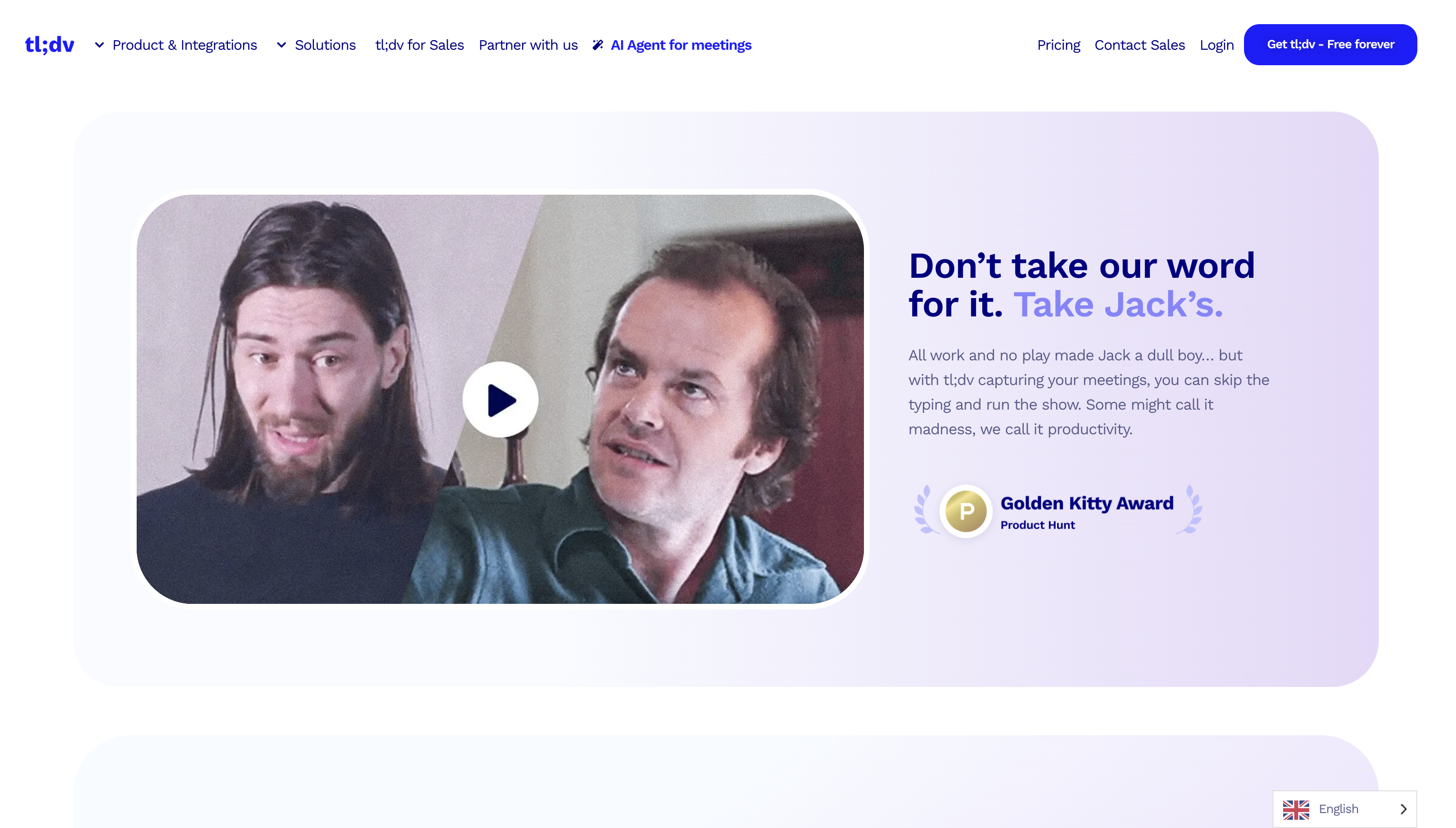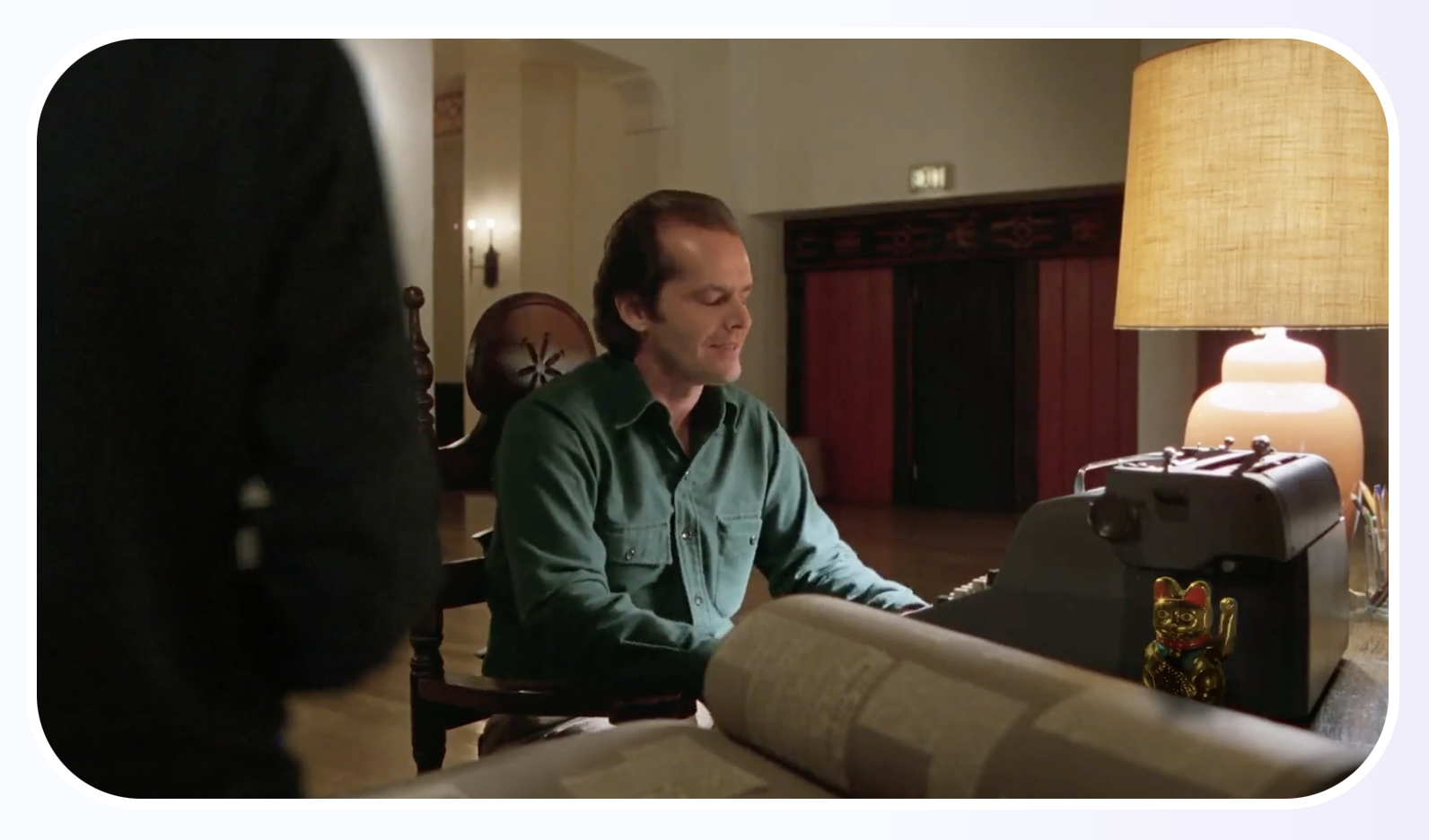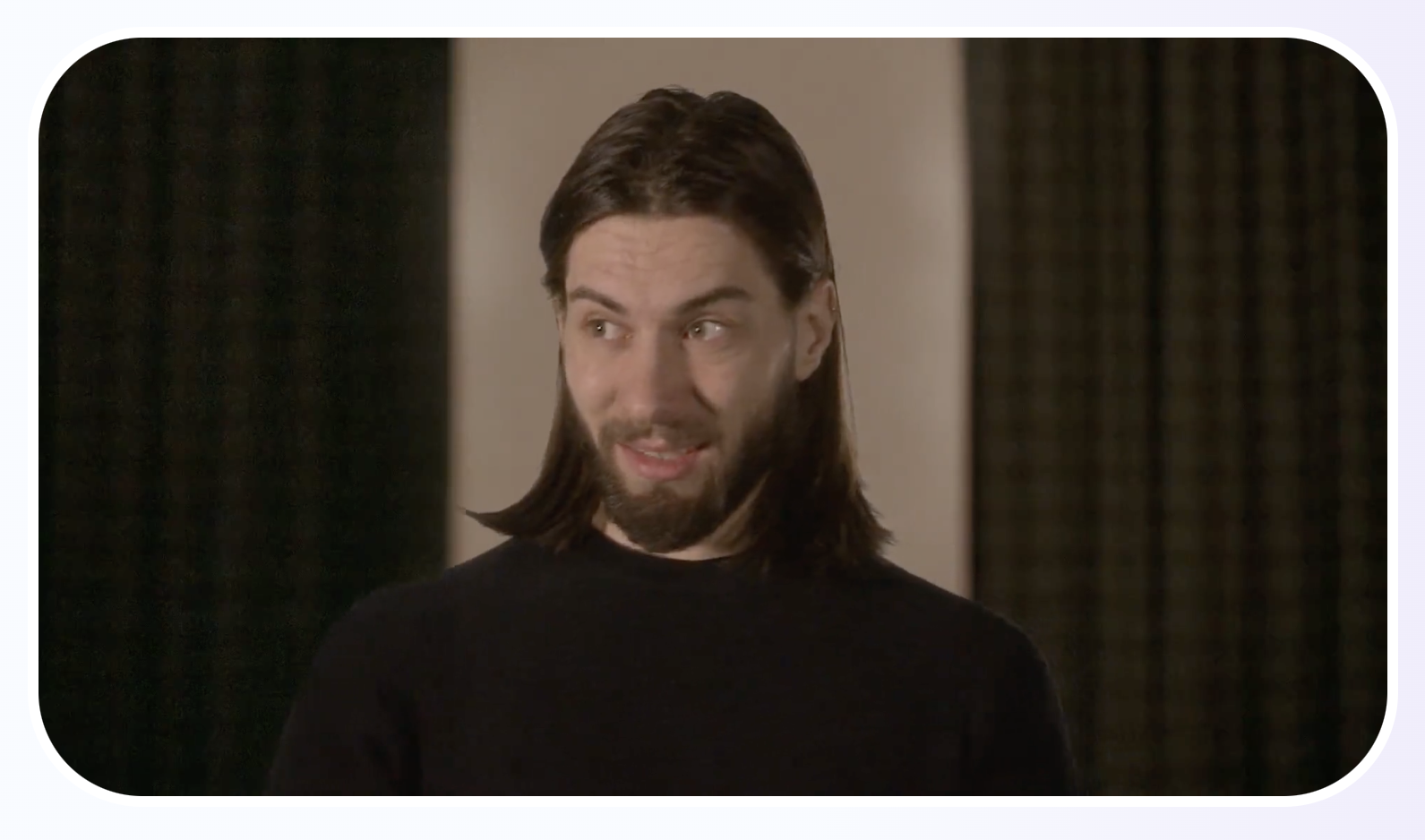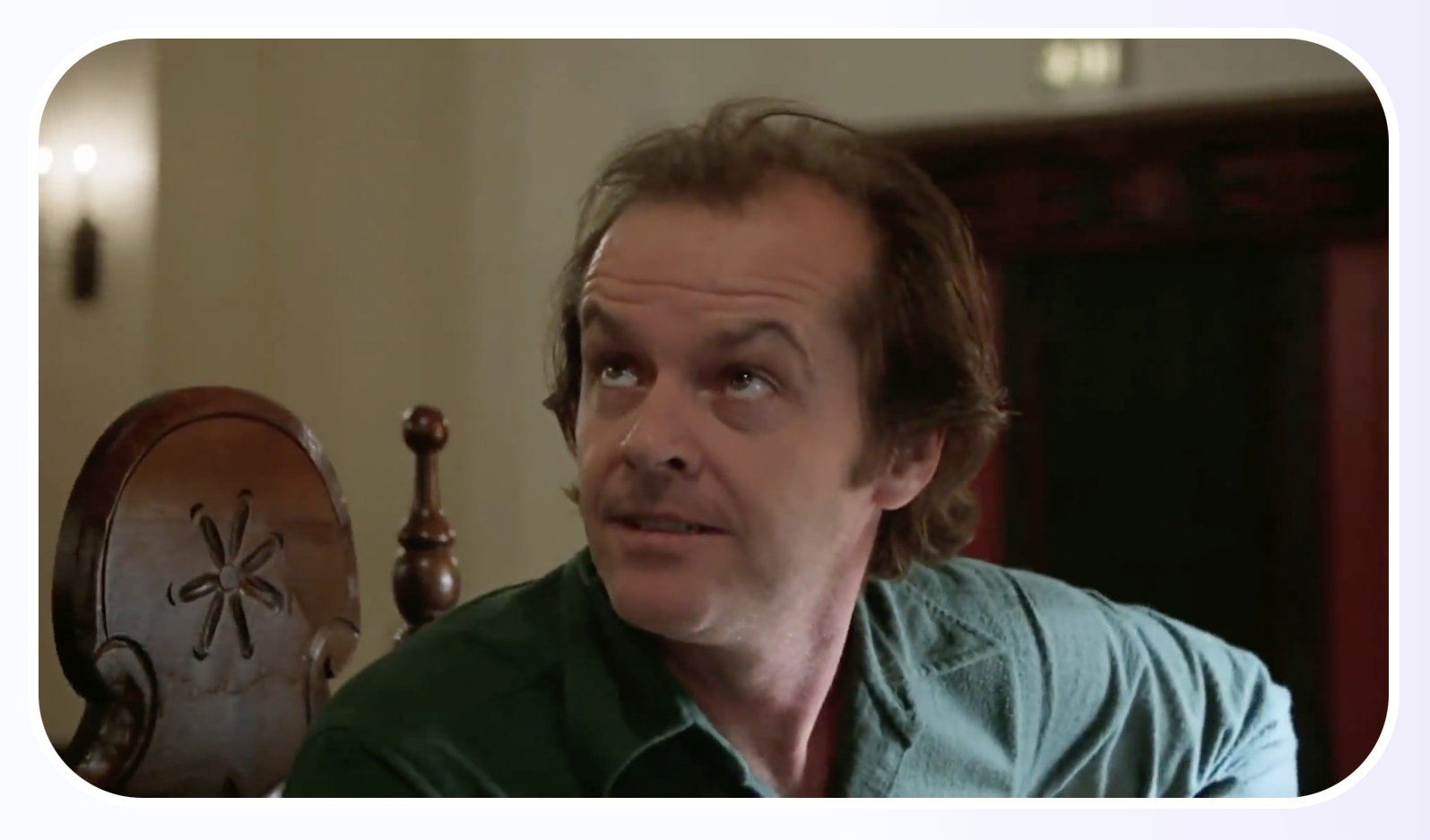
tl;dv’s homepage includes the re-enactment of The Shining where the tl;dv rep interrupts Jack Torrance during deep work to tell him about a meeting. Jack’s fury mirrors how everyone feels about meeting interruptions. Then, tl;dv becomes the solution.
The scene uses cultural shorthand (most know Jack = obsessively focused, hates interruptions) to make the pain point visceral, then demonstrate the product naturally within the story. This works when your product solves an emotional problem and your brand supports bold creative risks.
tl;dv is an AI-native platform for meeting management. Co-founded in 2020 by Allan Bettarel, Carlo Thissen, and Raphael Allstadt, tl;dv is headquartered in Aachen, Germany.
tl;dv’s homepage videos are so good that I had to write a second case example about this company. You can read the first one here.
Scroll past the hero section on tl;dv’s homepage and you’ll find something unexpected: a re-enactment of The Shining.
Not a tribute. Not a reference. A full scene where the tl;dv rep interrupts Jack Torrance mid-work to tell him about an upcoming meeting.
Jack is furious. He’s deep in concentration. The interruption breaks his flow. “When I’m in here, that means I am working. That means don’t come in.”
It’s uncomfortable. It’s tense. And it’s exactly how everyone feels when pulled into a meeting during deep work.
Then the twist: “Well, in that case, I think I’ll just tl;dv the meeting for you.”
The interruption becomes the solution. The tl;dv rep explains the product: it records the meeting, adds timestamps, tags you in relevant moments, so Jack can catch up later without watching the whole thing.
Jack’s face changes. He smiles. The tension breaks. “There he is. There’s the Jack we know and love.”



Using a famous movie scene gives tl;dv instant cultural shorthand. Most people know Jack Torrance = obsessively focused, hates interruptions, on the edge. You don’t need to explain the pain point. The character is the pain point.
The interruption itself becomes the product demo. The tl;dv rep showing up unannounced mirrors what meetings do: they break your concentration. But instead of being another interruption, he’s offering a way to avoid future ones.
This structure does something most product demos miss: it makes you feel the problem before solving it. Jack’s frustration is visceral. His anger is relatable. Anyone who’s been deep in work and gotten a meeting notification feels this.
Then the solution lands not as a pitch, but as relief. When Jack smiles after hearing about tl;dv, that’s the payoff. Visual proof that the product solves the problem.
The scene is also educational without feeling like a demo. While you’re laughing at the absurdity of interrupting Jack Torrance, you’re learning exactly what tl;dv does: records meetings, timestamps key moments, tags you in relevant parts so you don’t want to watch the whole thing.
And the humor makes it memorable. You’re not going to forget the homepage where someone interrupted Jack from The Shining to pitch an AI meeting tool.
Most SaaS companies demonstrate their product by showing the interface or listing features. tl;dv demonstrates by recreating a culturally recognizable moment of frustration, then solving it.
This works because their core value prop (skip meetings without missing context), is an emotional problem, not just a functional one. People don’t just need meeting summaries, as most AI tools pitch. They need to protect their focus and sanity.
By using Jack Torrance, tl;dv externalizes that internal frustration. The character becomes a mirror for how their audience feels. And when the character’s problem gets solved, the audience sees themselves getting the same relief.
The pop culture reference also signals brand personality. This isn’t a corporate, enterprise-y tool. It’s built by people who understand that meetings are often annoying, that deep work matters, and that sometimes you just want to tell interruptions to “get the fuck out of here.”
